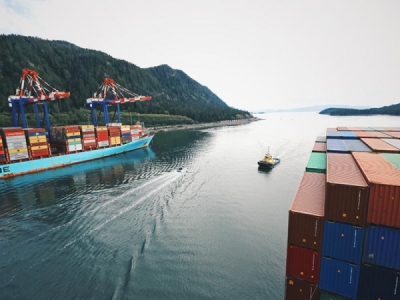
Posted on June 13, 2019
A planned expansion by the Prince Rupert Port Authority may propel the northern British Columbia, Canada, port into the second busiest in Canada.
A recently announced terminal master plan showcases the sequencing of development at the Port of Prince Rupert with the long-term potential to develop six to seven million TEUs (twenty-foot equivalent unit) of capacity through the development of multiple terminals at the port site located just south of the Alaska border.
With research led by AECOM, the plan includes capital costs, operating efficiencies, optimization of construction sequencing to minimize disruptions to ongoing operations and mitigation of air quality, noise and lighting as criteria for determining the feasibility and sequencing of container terminal potential at the Port of Prince Rupert.
“Conducting this work ensures we have a clear understating of the future potential for terminal development and contributes to a vision for the future of our container business to respond to the growing market demand for capacity at the Port of Prince Rupert,” Shaun Stevenson, president and CEO of the Prince Rupert Port Authority, said in a statement. “The terminal development potential identified in the study ensures that we can accommodate the short, medium and long-term supply chain needs of Canadian exporters while continuing to provide the unparalleled reach, reliability and speed shippers have come to expect at the Pot of Prince Rupert.”
The master planning concluded the potential for further expansion of Fairview Terminal and the development of a second container terminal at the port’s South Kaien Island site all remain viable. A second terminal could add 2.5 million TEU and was identified as the next phase of terminal expansion. The port announced in 2018 a project in conjunction with DP World to increase current capacity of the Fairview Container Terminal from 1.35 million TEUs to 1.8 million TEUs. That project is scheduled to finish by 2022.
Both the Fairview and South Kaien Island sites sit close to the expanding export logistics operations center on Ridley Island and will fully integrate operations following construction of the Fairview-Ridley Connector Corridor by the end of 2020. In November 2018, Port of Prince Rupert received nearly $22 million in funding from the Canadian government to support the $100 million Fairview-Ridley Connector, a five-kilometer corridor that will provide a physical platform for two new rail sidings and a private-haul road between Fairview Container Terminal and Ridley Island Industrial Site; $3.7 million for engineering and design for future expansion of the port’s road rail utility corridor; and $3.2 million for the engineering and design of Canadian National Railway’s (CN) mainline entry and exit to and from the Gateway.
DP World and CN both support the expansion efforts at the port. “The Port of Prince Rupert continues to be an important part of CN’s supply chains to and from international markets,” JJ Ruest, president and CEO at CN, said in a statement. “This strategic port provides a rail connection to key markets and its continued expansion will further solidify the port’s place as a world-class gateway. Our recent record capital investments further underpin our commitment to getting Canadian natural resources and consumer products to markets safely and efficiently and the Prince Rupert gateway is key to that strategy.”
One of the fastest growing ports in North America, the Port of Prince Rupert handled a record 1 million TEUs and 30 million tons of cargo in 2018. The port expects to become Canada’s second-largest port within the next five years, trailing only Port Metro Vancouver and passing Port of Montreal.
“Our planned container terminal capacity expansion ensures Canadian shippers will be able to meet their supply chain needs well into the future,” Stevenson says, “and will be well-served in meting its objectives of growing trade in the Asia Pacific region.”
Source: enr.com





